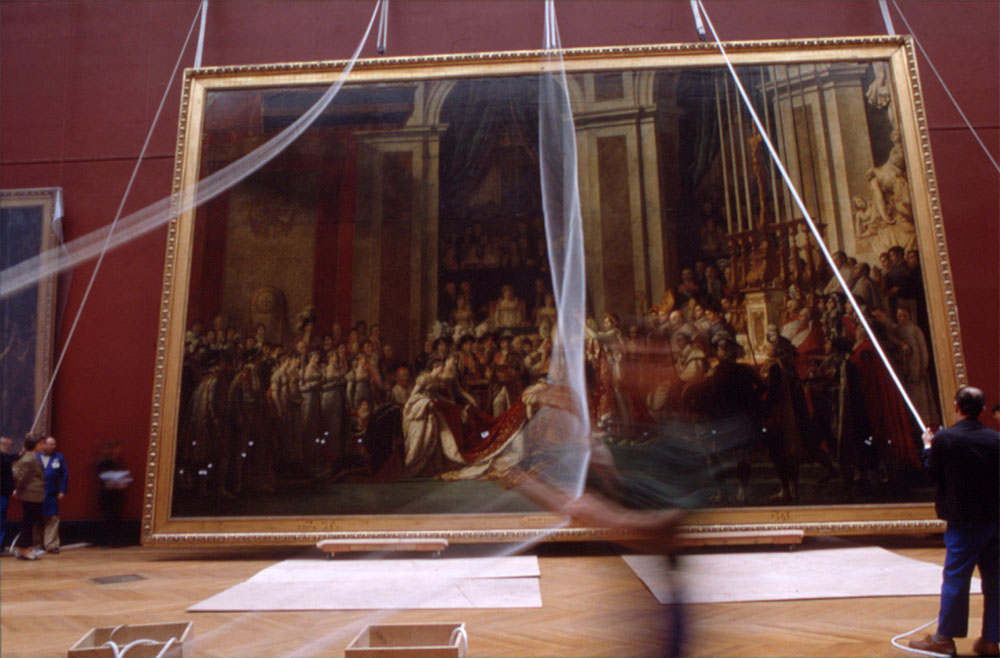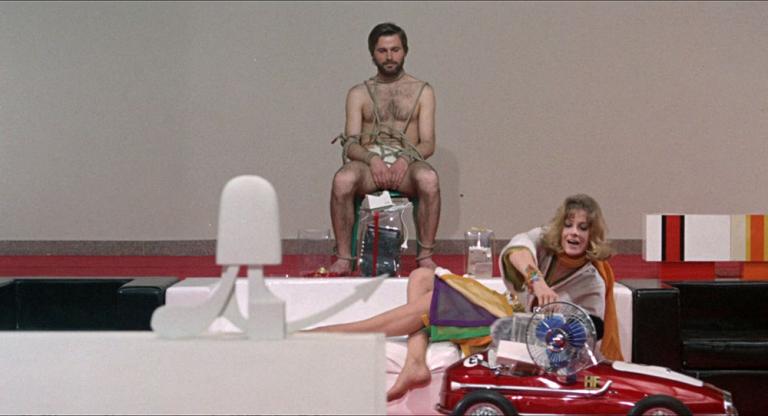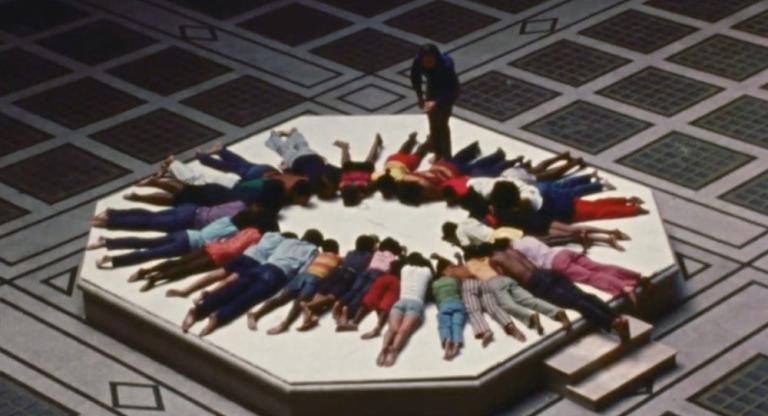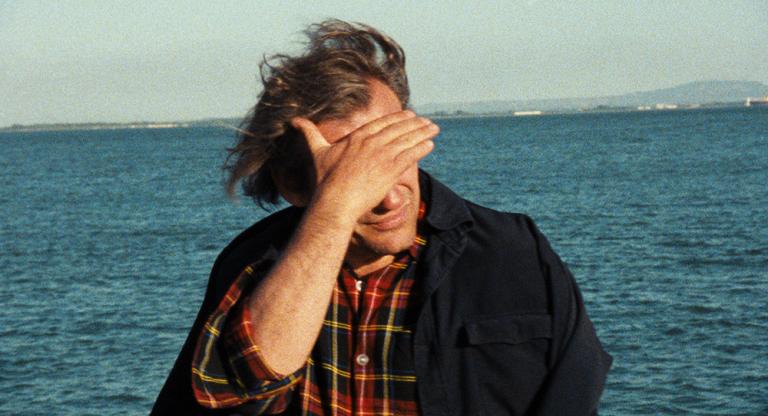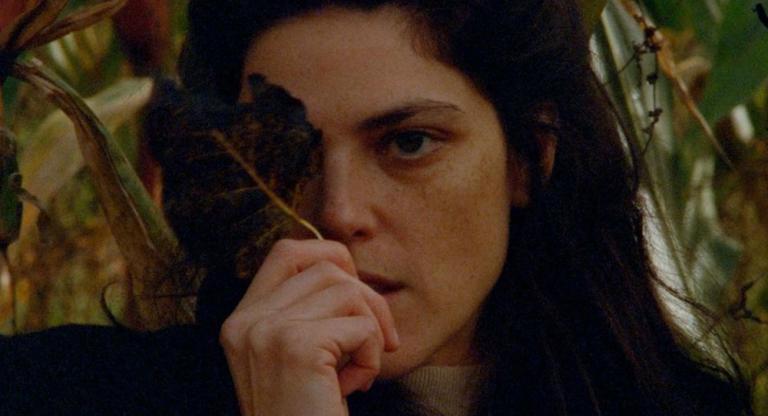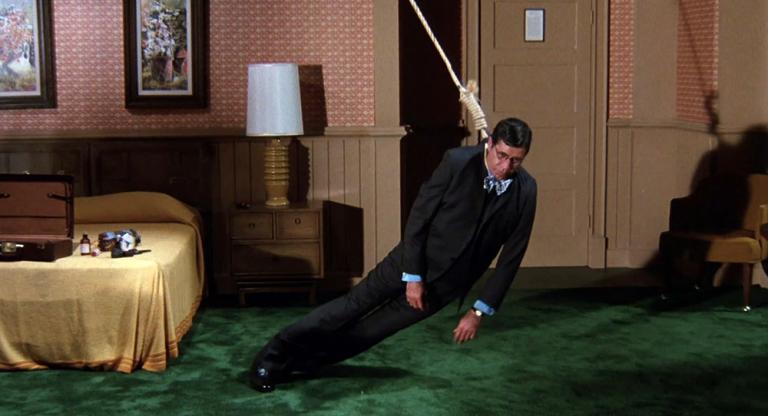The French documentarian Nicolas Philibert’s vérité doc The Louvre City (1990) is the first instance of a film crew roaming the titular museum after hours, procuring a laconic account of the zenith of the art worlds and its requisite labor practices. Moving like a handheld procedural through the newly renovated space as troupes of workers mount exhibitions, The Louvre City adopts a curatorial choreography: dozens of hands fastening a panorama to the wall; bodies in abiding motion beside immobile sculptures; the echoic clack of high heels through the miles of underground passageways; curators, restorers, and laborers all commenting on the space.
The film emerges just after the significant and controversial expansion of the museum, carried out by Chinese-American architect I.M. Pei, wherein a glass and metal pyramid was erected in the courtyard. Workers are seen scaling and polishing its many rhombi, capturing the absurdity which then marked the structure. There are then fire extinguisher demonstrations, CPR dummies, and cafeteria footage—the unsung functions which would later characterize Frederick Wiseman’s National Gallery (2014).
We are constantly shown the backsides of canvases, those versos which remind us of our position as backdoor spectators. Sometimes the tops of paintings appear in autonomous movement, the bodies carrying them just out of frame, giving the impression that these works are floating in space. Where another director might have used the institutional access to communicate reverence of the art objects housed in the Louvre, Philibert’s inclination toward the mundane undoes the sacrosanctity of the space; artwork is wrapped up in plastic and lugged around, limp and unassuming.
Philibert revisited the backstage manners of museum-making again in 1996 with Animals, where the Zoology Gallery of the National Natural History Museum is reinstated—and to more comical effect, with taxidermied badgers and monkeys in place of classical paintings. But the shadowy opening footage of The Louvre City, which wryly frames the nipple-pinching in Gabrielle d’Estrées et une de ses sœurs, plants a particular way of looking: playful, attentive, unsentimental, appreciative.
The Louvre City screens this afternoon, March 12, at FIAF as part of the series “Nicolas Philibert: A Tender Lens.”
CONTOURS is a column by Saffron Maeve examining films that thematize the world of visual art: heists, biopics, documentaries, and experimental fare. Maeve also programs a screening series of the same name and premise at Paradise Theatre in Toronto.
